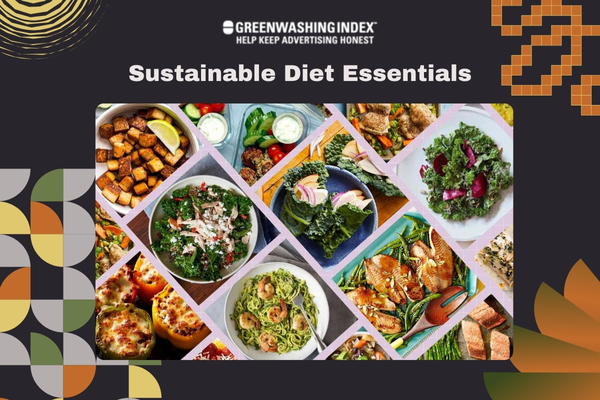When we talk about a healthy lifestyle, the term “sustainable diet” often comes into play. But what does it truly involve? Away from the technical jargon and complex definitions, I’m diving deep to explore how everyday food choices can impact not just our health but also the world around us.
A sustainable diet isn’t just another fad; it’s a movement toward responsible eating and eco-friendly nutrition that’s picking up steam. Let’s crack the code together.
So, you’re curious about everything a sustainable diet entails? In its simplest form, a sustainable diet focuses on choosing foods that are good for our bodies and kind to our planet. This means prioritizing green food choices in your meals that nourish you without harming the environment.
It looks beyond just calories and nutrients to consider where your food comes from, how it’s produced, and what happens after you’re done eating.
What is a Sustainable Diet?
A sustainable diet is a way of eating that looks out for both our health and the planet. It’s all about picking foods that nourish our bodies without harming Earth. With a sustainable diet, we think about where our food comes from, how it grows, and what kind of mark it leaves on nature.
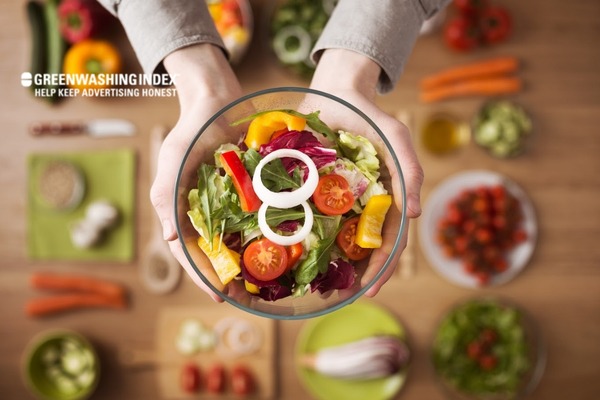
Building Blocks of a Nutritious and Eco-Friendly Plate
When I create my plate with sustainable foods, I make sure it ticks two major boxes: good for me and good for the environment. Here’s how you can do it too:
- Choose Lots of Plants: Vegetables, fruits, nuts, seeds, beans, and whole grains are the stars here. They are not just packed with vitamins but also use less water and land to grow.
- Pick the Right Proteins: Opt for fish from clean waters or pasture-raised chickens if you eat meat. Beans and lentils are excellent plant proteins too!
- Go Local and Seasonal: By eating what’s grown nearby when it’s in season, you cut down on the long trips your food takes to reach you. This means less fuel burnt – better for clean air!
- Dairy or Alternatives Thoughtfully: If dairy’s your thing, go for milk or yogurt from farms that treat their animals right and take care of nature. Plant-based milks like almonds or oats can also be eco-friendly picks.
- Whole Foods Over Processing: The less a food is changed from its natural state, the better! Processed foods often need more energy to make (think machines running) which isn’t great for our skies.
- Mind Your Method: How your food gets cooked counts too! Baking or steaming might be better than frying often because they use less oil – which means saving resources.
These actions nourish not just us but support a healthy world as well.
The 3 Pillars of Sustainability in Your Eating Habits
Sustainable eating stands on three big ideas:
- Economic Fairness:
- Paying a fair price so that those who grow our food can live well.
- Choosing products from businesses that pay workers properly.
- Cultural Acceptability:
- Respecting traditions by incorporating locally loved ingredients into meals.
- Embracing different ways people around us enjoy food.
- Accessibility:
- Making sure everyone can get to this kind of nutritious and green food.
- Supporting programs that help bring fresh produce to places where it’s hard to find.
By keeping these three pillars strong in my eating habits – thinking about money fairness between buyers/sellers, honoring all cultures’ eats around me, and aiming for everyone to have access – I am supporting an even bigger picture: a world where we all enjoy delicious meals without hurting tomorrow’s chances for young ones coming up after us.
Remembering these easy principles every day helps guide my choices towards more responsible eating patterns benefiting both health and the environment now – while looking out long-term too.
Also Read: New Nordic Diet Guide: Embracing Health and Sustainability
Crafting Your Sustainable Diet Plan
When I think about my journey toward a sustainable diet, I remember it’s as much about being kind to the planet as it is about taking care of myself. It’s not just a passing trend; it’s a commitment to living better. I want to guide you through how I crafted my own sustainable diet plan, step by step.
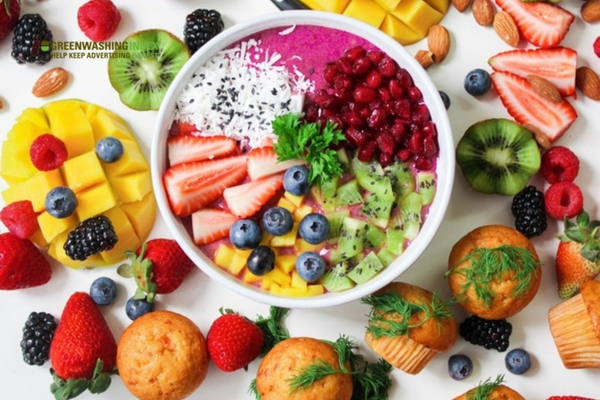
Starting Simple with Sustainability
Making changes in the way I eat didn’t happen overnight. At first, the idea of overhauling my entire diet was daunting. But I started simple and built up from there. Here are some straightforward steps:
- Know Your Food Sources: First off, I made an effort to find out where my food came from. Were my veggies locally grown? Did the shop support fair trade for its coffee beans? Knowing this helped me make better choices.
- Reduce Meat Intake: Next up was cutting down on meat, starting with one meatless meal a week and then gradually increasing that number.
- Choose Seasonal Produce: Not only does seasonal produce taste better, but it also reduces the environmental impact because there’s less need for long-distance transportation.
- Cut Back on Packaging: This was as easy as bringing reusable bags and containers when shopping.
- Plan Meals Ahead: By planning what to eat for the upcoming days or even the whole week, I could avoid last-minute takeouts that often come with lots of packaging and carbon footprint.
Incorporating Diversity on Your Plate
I found out pretty quickly that sticking a bunch of different foods onto your plate is not just great for health but also helps our Earth thrive:
- Eat A Rainbow: When they say ‘eat your greens’, they’re onto something—still don’t forget reds, yellows, and purples too! Varied colors often mean varied nutrients.
- Try Alternative Proteins: Beans, lentils, peas… they’re all packed with protein without needing as many resources as meat production does.
- Discover New Grains: Aside from rice or wheat, quinoa or barley can add new tastes and textures while promoting crop rotation which is good for soil health.
Plant-Power to the People: Increasing Your Greens
Changing towards more green stuff – plants – in your meals isn’t just trendy; it truly helps lighten our footprint on this planet:
- Go For Whole Foods: Processed junk doesn’t do anyone any good. Fresh fruits and veggies are cleaner for both our bodies and land.
- Plant A Garden: Even if it’s just herbs on your windowsill – start growing something! It’s empowering and helps reduce food miles (the distance food has traveled).
Conserving Our Resources Through Diet
Everything we do takes resources like water or energy; choosing what we eat carefully means we can help conserve them:
- Mind The Water Footprint: Some foods need lots of water to grow. Eating things like tomatoes or lettuce instead of almonds can make a difference in water usage.
Crafting a sustainable diet starts with small steps: knowing where your food comes from, eating diverse foods, especially plants reducing meat consumption cutting back on waste planning ahead Including variety ensures personal health matches ecological balance.
Plants significantly lower our environmental footprint while conserving resources like water deeply affects sustainability, If each part seems overwhelming focusing one at a time makes transforming eating habits into eco-friendly nutrition surprisingly manageable.
Remember responsible eating isn’t only greener options—it’s a mindset embracing deeper respect for finite resources. OURS Planet provides us with every day.
Also Read: Bamboo Fabric: Sustainable Fashion’s Savior or Slip-up?
Making Sustainable Choices Accessible
When I think about how my food choices impact the world, a sustainable diet is always at the forefront of my mind. Eco-friendly nutrition isn’t just a buzzword; it’s a pathway to protecting our planet. So let’s dive into where you can shop for sustainable food and what labels to look for.
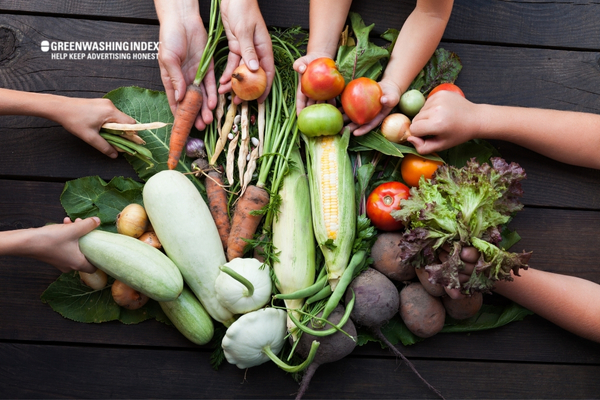
Where to Shop: The Quest for Sustainability
Finding sustainable food options means knowing where to look. Here’s a simple guide:
- Farmers’ Markets: These are great places to start. Farmers often sell products that are grown locally, which means they haven’t traveled long distances causing pollution.
- Look out for organic produce – no harmful pesticides mean better soil health.
- Ask farmers about their farming practices like water usage and crop rotation.
- Co-ops (Cooperative Stores): These stores are owned by members and focus on providing natural and organic foods, including items from local growers.
- Being a member can get you discounts.
- They usually support small-scale farmers focusing on responsible eating practices.
- Specialty Health Food Stores: These shops take pride in offering selections that cater to green food choices.
- You might find meat alternatives or plant-based options here.
- Don’t forget to explore their bulk bins section – it cuts down on packaging waste!
- Local Grocery Store: Yes, even your nearby supermarket can have an aisle or section dedicated to eco-friendly products.
- Keep an eye out for brands known for their environmental conscientiousness.
- Community Supported Agriculture (CSA): Joining a CSA program is like getting a subscription box of fresh produce right from local farms!
- You’ll get seasonal fruits and vegetables which help reduce transportation emissions.
- Online Retailers: There are websites focused on selling eco-friendly goods, some even deliver using minimal packaging or electric vehicles.
- This can be convenient, but watch out for shipping distance – closer sources are more eco-conscious.
Navigating Labels & Certifications
Understanding what the labels mean is crucial when choosing environmentally friendly products:
- Organic Certification: This label means no synthetic fertilizers or pesticides were used, good news for soil and water health!
- Fair Trade Certified™: Such labels ensure that farmers get fair prices; it’s about economic sustainability too!
- Non-GMO Project Verified: GMO refers to ‘genetically modified organisms.’ This label assures you the product has no genetically altered ingredients.
- Rainforest Alliance Certified™: Products with this certification contribute towards biodiversity conservation and sustainable livelihoods within rainforest areas.
- Certified B Corporation: Items from these companies meet high standards of social and environmental performance, transparency, and accountability.
- Marine Stewardship Council (MSC): Look out for this label when buying seafood – it stands for sustainably caught fish species without harming marine ecosystems.
Understanding, all these symbols might seem overwhelming at first but worry not! You’ll become familiar with them as you continue making conscious shopping decisions in your journey toward responsible eating—and alongside many others who choose this path each day toward bettering our beloved planet through the foods we eat!
Also Read: Sustainable Halloween: Throw a Fun Costume Swap Bash!
Locally Grown: A Deep Dive
When we think about what’s on our plates, it’s not just about the taste. It’s about where it comes from and what that means for our earth. A sustainable diet has a lot to do with choosing food that doesn’t harm our planet so much. That’s why I want to talk specifics—let’s dive deep into eating stuff grown close to home.
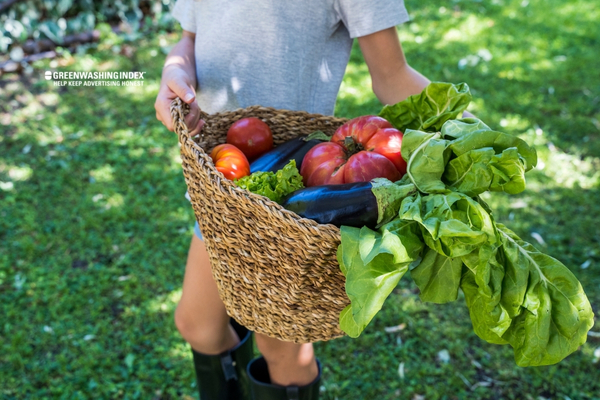
The Impact of Eating Locally Sourced Foods
When we talk about a sustainable diet, we’re looking at how our food choices can help the planet. One big piece of this puzzle is eating locally grown foods.
Local foods are more than just a trendy idea; they leave a smaller carbon footprint. Why is that? Well, imagine a tomato that’s grown far away from where you live. That single tomato has to travel on trucks or even planes to get to your local grocery store. This travel burns fuel and sends gases up into the air, which isn’t great for our sky and air.
But when you pick up a tomato that’s grown close by, it doesn’t have to go on such a long journey. It might come straight from the farmer to your table, which means less fuel burned and cleaner air for all of us.
Let me break down why eating locally sourced food matters so much:
- Less Transportation: Foods grown closer to home need less transport, which cuts down on emissions from trucks and planes.
- Freshness: Local produce is often fresher because it hasn’t been sitting in storage or on trucks for days.
- Support for Local Farmers: When you buy directly from local farmers, your money stays in the community and helps those farms keep growing.
- Seasonal Eating: By choosing local foods, we also tend to eat what’s in season in our area, which connects us more closely with nature’s cycles.
- Variety Preservation: Small farms usually grow different types of crops compared with large commercial ones; so eating local helps preserve this variety.
- Reduced Packaging Waste: Since local products don’t have to travel far, they often require less packaging material, leading to reduced waste.
- Stronger Community Ties: Knowing where your food comes from can connect you with food makers around you—helping build bonds within the community.
Every time I make the choice for sustainable diet practices like responsible eating and eco-friendly nutrition by picking green food choices like these locally sourced treasures at the farmer’s market or my neighborhood store—I’m doing my bit against the environmental impact caused by diets across the globe.
It feels good knowing I’m taking care of my corner of the world while also enjoying some really tasty meals! And when folks ask me why I bother with these food choices—I tell them about all these benefits—benefits not just for me but for our community and our whole planet too!
Also Read: Food Waste Reduction: Simple Tips for Major Impact
Reducing Waste Alongside Waistlines
When I embark on a journey to improve my eating habits, I often focus on not just what’s good for me but also what’s good for the planet. This is where the concept of a sustainable diet really shines. It’s about making choices that are eco-friendly, kind to our earth, and responsible overall.
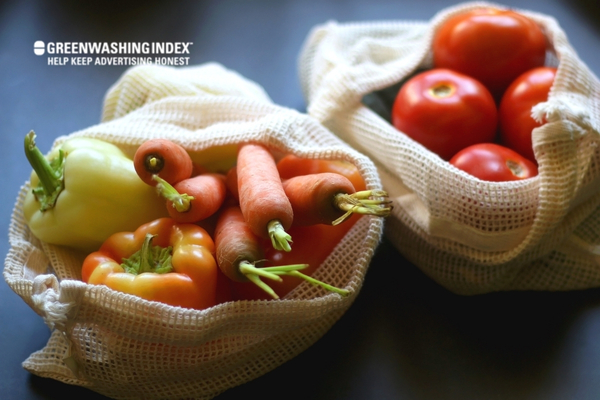
One of the most effective ways to follow a sustainable diet is by reducing food waste. And who knew? In doing so, we might even keep our waistlines in check too. Here’s how I manage my food smarter and cut down on waste:
Leftovers Aren’t Left Behind – Tips for Reducing Food Waste
Talking about a sustainable diet often means thinking about the environment and our health at the same time. I like to think of it as being kind to Earth while also taking care of myself. An important part of a sustainable diet is reducing waste – this can help cut down on how much trash ends up in landfills.
Plus, wasting less food also saves money! I’ll share with you ways I make sure leftovers aren’t left behind and how you too can minimize food waste.
Plan Your Meals
Before stepping foot into a grocery store, I take some time to plan out what I’ll eat during the week. This small step makes a big difference:
- Know what’s already at home: First off, check your fridge and pantry. Knowing what you have helps avoid buying things twice.
- Make a list: Write down what meals you’ll cook and exactly what ingredients you need.
- Stick to the list: It’s easy to get tempted by sales or fancy foods, but remember your plan!
Store Properly
Storing food correctly keeps it fresh longer, so when it comes to sustainable diet practices:
- Put dairy items in the coldest part of your fridge (usually the back).
- Store fruits and vegetables in different drawers; they can spoil each other faster if kept together.
- Use clear containers so you can see what’s inside without opening them.
Also, did you know your freezer is your friend?
- Freeze bread that won’t be eaten quickly.
- Cut up fruit or veggies nearing their end and freeze them for smoothies or cooking later on.
Love Your Leftovers
Leftovers are like bonus meals! Here’s how I make sure they get used:
- Plan a ‘leftover night’ each week where dinner is just reheating those delicious extra portions from previous days.
- Get creative: turn last night’s roasted chicken into today’s chicken salad.
Remembering that every bit of food saved is good for both my wallet and my planet motivates me to follow through on these actions daily as part of my journey towards responsible eating.
By embracing these steps into our lives, we commit not just to an eco-friendly nutrition path but also participate actively in reducing the environmental impact of diets globally. Being mindful of green food choices may seem small but imagine if everyone did this – quite impactful don’t you think?
Sustainable Seafood Selection
When I think about making food choices that are good for our planet, picking the right seafood is a big deal. You might wonder what makes some seafood better for the environment than others. Well, it’s all about how fish are caught and whether there are enough of them left in the ocean.
Making Waves with Ocean-Friendly Choices
I’ll share with you a few simple tips on how to select seafood that doesn’t harm our oceans:
- Look for Certification Labels: When I’m at the store, I check for labels like “Marine Stewardship Council” or “Aquaculture Stewardship Council”. These badges mean that experts have checked and said yes, this seafood is caught in ways that don’t mess up the ocean.
- Choose Low on the Food Chain: Eating fish like sardines or anchovies is often a better choice because they reproduce fast and there are lots of them. The more we eat from the lower down in the food chain, the less pressure we put on bigger fish that take longer to grow.
- Ask About Fishing Practices: Some ways of catching fish can hurt other sea life or damage the seabed. So, if I can’t find a label, I ask my fishmonger how it was caught. Pole-and-line or handline methods are usually kinder to marine life than big nets dragging along the bottom.
- Pick Local and Seasonal: Local seafood can be more sustainable because it hasn’t traveled halfway across the world to reach my plate. Plus, when fish are caught during their right season, it means they’ve had time to grow up and make more baby fish.
- Use Seafood Guides: There are handy guides created by organizations like Monterey Bay Aquarium’s Seafood Watch. They tell me which kinds of seafood are best to eat from different parts of the world.
By sticking to these easy steps when choosing my seafood, I help protect our oceans and make sure there will still be plenty of fish swimming around for future generations to enjoy too! It feels good knowing that every responsible eating choice I make, especially with eco-friendly nutrition in mind like sustainable diet practices – including green food choices – impacts our environment positively!
Balancing Ethics with Appetite
When I think about what’s on my plate, it’s not just the flavors that matter to me but also where my food comes from. That’s why a sustainable diet is something I take seriously. This kind of diet balances our need for nourishment with care for our planet. It’s about making choices that are good for both us and the environment.
Fostering Ethical Eating Habits through Conscious Consumption
Being mindful about what I eat means looking closely at how it affects other living beings and our environment. Here’s how animal welfare fits into the concept of a sustainable diet:
1. Know Your Food Sources: This means understanding where your food comes from. For example, if I buy eggs or milk, I try to find out how the chickens or cows are treated. Were they given space to move freely? What kind of food were they fed?
2. Choose Products from Humane Farms: I look out for labels that say things like “free-range” or “organic.” These can signal that animals were treated better than on traditional farms where animals might be kept in tight spaces.
3. Eat Less Meat: A big part of eating ethically is minimizing harm to animals by reducing meat consumption. Personally, this doesn’t mean giving up meat entirely—just eating less of it and choosing wisely when I do.
4. Support Animal Welfare Legislation: Voting for laws that protect farm animals helps make sure they’re treated humanely across the industry.
By being conscious of these factors, every bite we take can contribute to a healthier planet and happier farm animals – which is pretty amazing!
Conclusion
In wrapping up, my journey through a sustainable diet has shown me that being kind to the planet starts with what’s on my plate. It’s not just about cutting down meat or choosing organic; it’s truly a holistic approach.
By eating locally, reducing waste, and considering how my food is produced, I play a part in nurturing the environment. Let’s remember, though, that transitioning to eco-friendly nutrition doesn’t happen overnight. It’s okay to take small steps.

